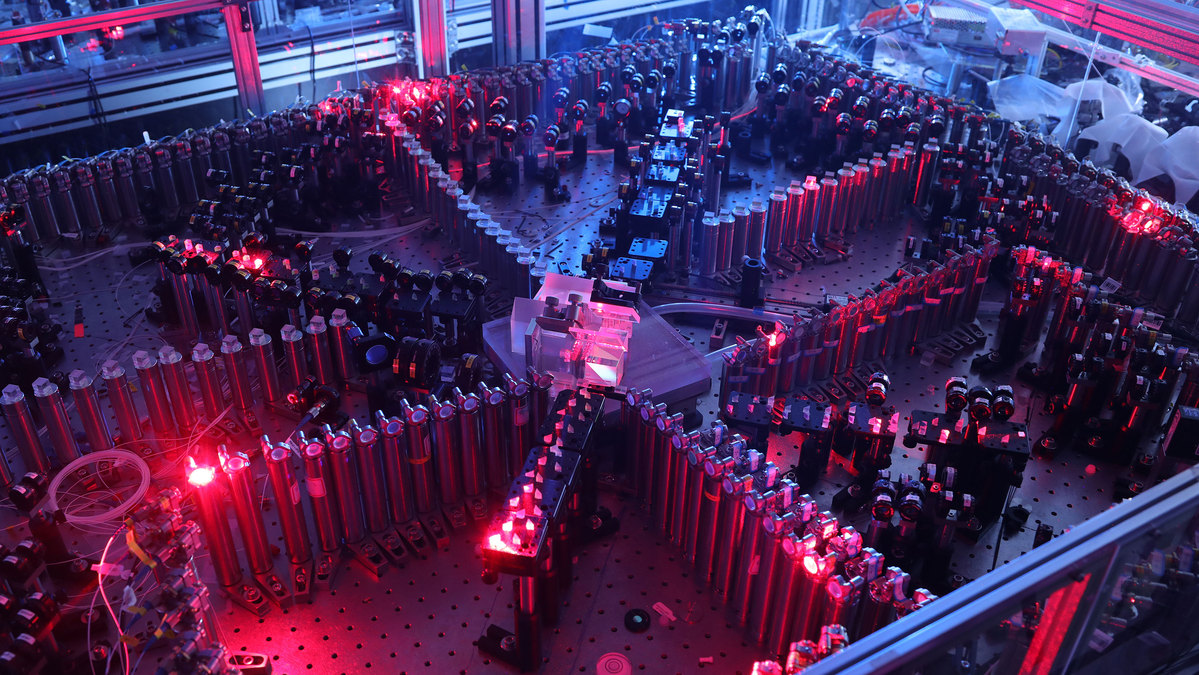
中文


Home

CAE in Media

Detail
More sci-tech innovation a national goal
- Published: Jun 7, 2022
- Source: ChinaDaily
- Font size: BigMediumSmall

A section of the light-based quantum computer created by researchers at the University of Science and Technology of China. [Photo/Xinhua]
China strives to make further original breakthroughs in core technologies
China will enhance efforts to make more original breakthroughs in core technologies, train quality talent, conduct institutional reforms, expand international cooperation and contribute more to tackling global challenges, officials said on Monday.
Since the 18th National Congress of the Communist Party of China in 2012, China has witnessed profound and historic progress in its science, technology and innovation sectors, Wang Zhigang, minister of science and technology, said in a news briefing hosted by the Publicity Department of the CPC Central Committee.
China's ranking in the Global Innovation Index rose from 34th in 2012 to 12th in 2021, Wang said. The country's gross domestic research and development budget more than doubled from 1.03 trillion yuan ($150 billion) in 2012 to 2.79 trillion yuan last year.
Chinese science workers and innovations have focused on exploring global sci-tech frontiers, serving main economic sectors, meeting major national needs, and safeguarding people's lives and health, he said.
On the other hand, Wang said, China still has many shortcomings in making original breakthroughs, training high-quality talent, and obtaining key and core technologies.
As a result, Wang said, China will need to enhance basic research, strengthen private companies' roles as pillars of innovation, and create new engines for high-quality development with new science and technology breakthroughs.
Hou Jianguo, president of the Chinese Academy of Sciences, said the academy is a crucial part of China's strategic research capability and has made numerous breakthroughs in core technologies over the last decade.
Some notable examples include new instruments for China's manned space missions, new scientific satellites, and new deep-sea exploration equipment. Moreover, China is also a global front-runner in condensed matter physics, nanomaterials, stem cell research and molecular science, he said.
Around 110,000 scientific achievements from the academy have been transformed into technologies and products to aid China's economy, Hou said. These included the Sugon supercomputer, artificial intelligence chips, stem cell research technologies, medicines and vaccines for COVID-19, and new industrial processes for converting coal into other useful chemical products, he added.
The academy is aiming to become a world-class scientific institution capable of making more original breakthroughs, nurturing quality talent, engaging in more international collaborations and creating innovations that can meet the nation's needs, he said.
Li Xiaohong, president of the Chinese Academy of Engineering, said engineering has played a vital role in supporting China's socioeconomic development and global image, with high-speed trains, hydraulic dams, bridges and harbors being some of China's most recognizable engineering feats.
Li said the academy aims to become a high-end think tank that can support China's major sci-tech policy decisions and local governments' socioeconomic development plans.
Zhang Yuzhuo, vice-president of the China Association for Science and Technology, said the ratio of China's scientifically literate population rose from 6.2 percent in 2015 to 10.5 percent by 2020.
Li Jinghai, head of the National Natural Science Foundation of China, said the foundation will conduct institutional reforms to streamline research project applications, support young talent and encourage scientific exploration.

Major science and technology indicators CHINA DAILY
